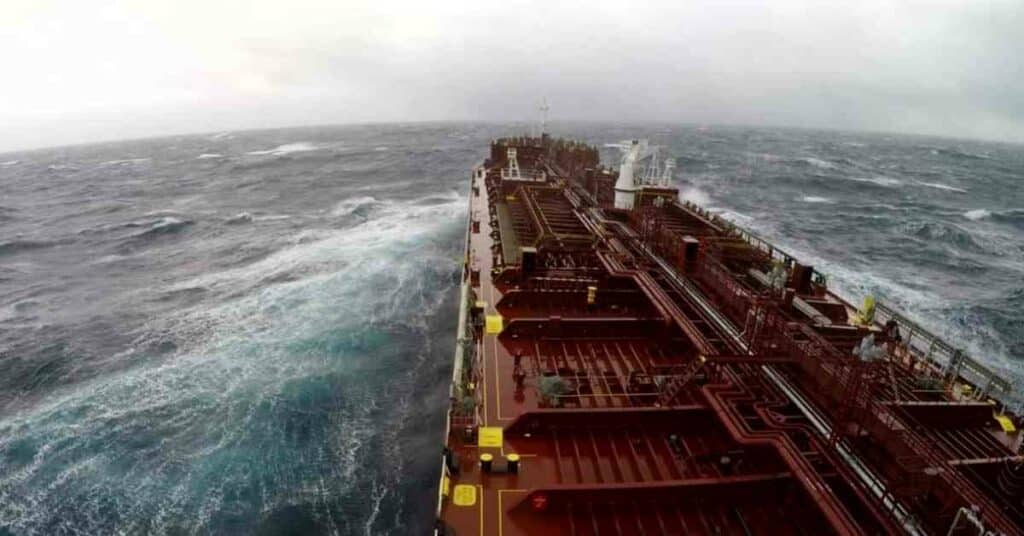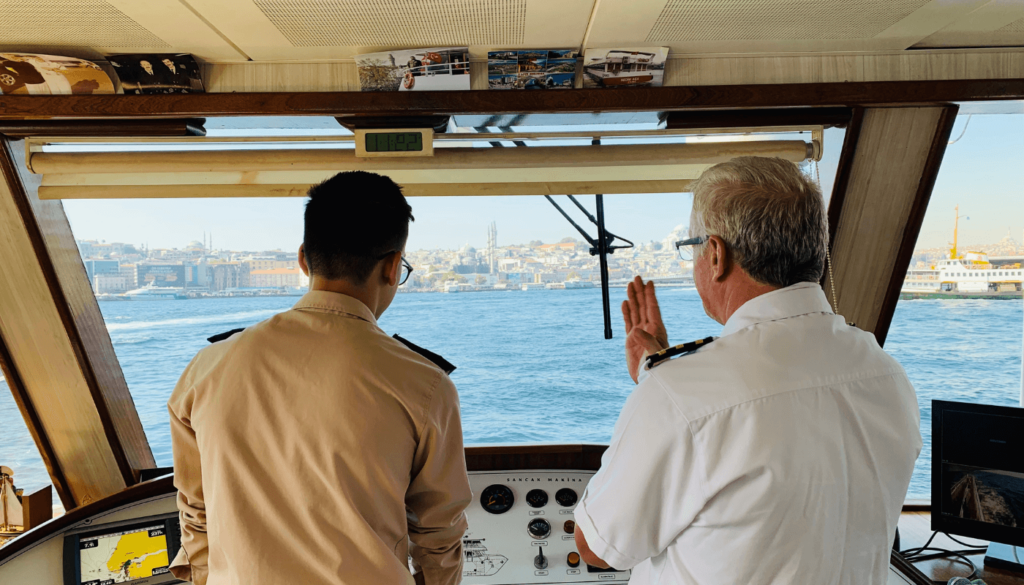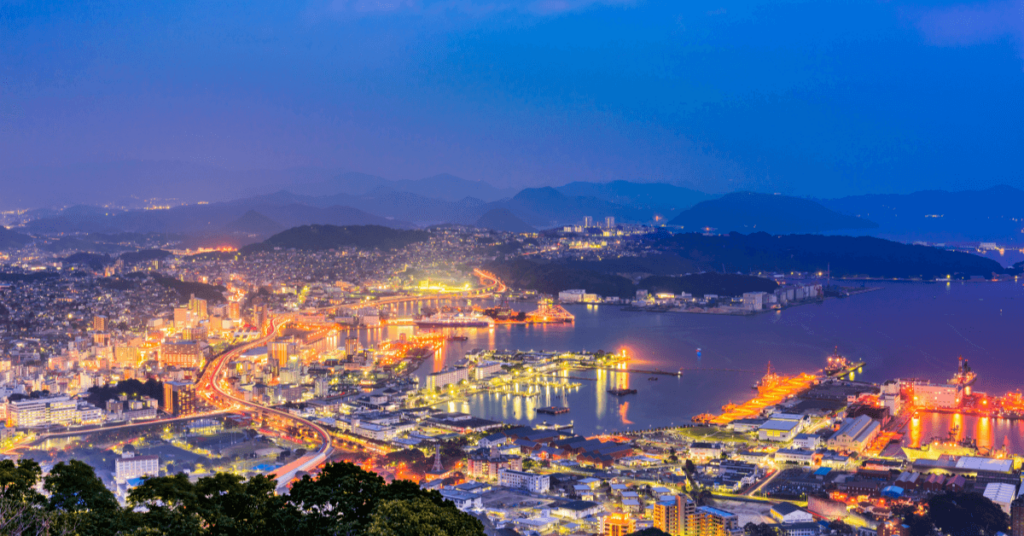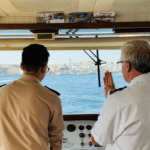Major Ports And Terminals in Moldova
Moldova is a landlocked nation in the Balkan region of Europe. Its capital and biggest city is Chișinău, situated in the south-central region. From the west, Moldova is bordered by Romania and from the north, east and south by Ukraine.
Moldova was a Soviet Republic until 1991 and traditionally depended on its neighbours for most of its energy supplies, including gas and oil, as it has few natural resources. Even today, its 3 million people strongly depend on agriculture while the service sector has also grown significantly.
It has one of the lowest GDPs in Europe, and most of it is dominated by the service sector. However, the country is known for its world-famous wine industry and fertile agricultural lands. It has a rich history, ancient monasteries and beautiful countryside.
Moldova has 147,000 hectares of its land under vineyards, of which 253,000 acres are used for commercial production. Most wine is exported, and families have their recipes passed down through generations and different grape varieties.
Moldova has only one port which is the Port of Giurgiulești that deals with all of its international maritime trade. Recently, the port has expanded operations and registered commendable growth as a result of the Russian-Ukrainian Conflict, as we will discuss later in this article.
Port of Giurgiulești
Also known as the Giurgiulesti International Free Port, it lies on the river Danube, at its confluence with the Prut River, which runs along Moldova’s western border. The Danube eventually flows into the Black Sea.
It is a strategic facility since its the only port in Moldova accessible to sea-going vessels. The port offers water depths up to 7 metres and receives inland vessels too.
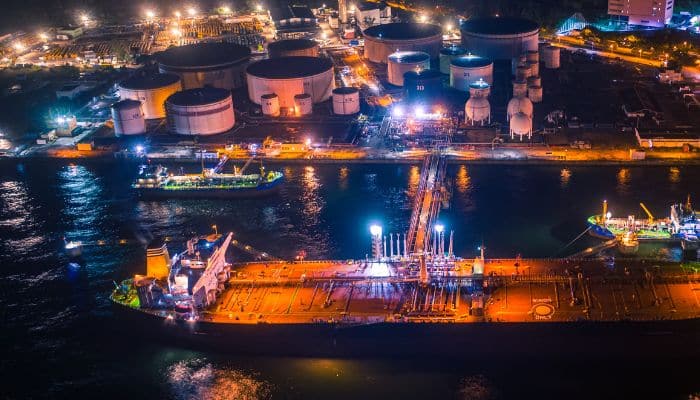
Many advantages are offered to clients at this port, starting from an excellent location for trade and business development, unique and favourable customs and tax regulations followed by its function as a regional logistics centre on the border of the EU, easily connected by roadways, railways and seaways.
It also acts as the direct sea and river-borne transhipment and distribution point to and from Moldova.
Now that we have discussed the advantages the port offers to its clients let us look at the port’s history and its terminal operations, services provided and so on.
Port History
The port was built as a consequence of a territorial exchange with Ukraine, where Moldova got a 430 m bank of the Danube River.
The construction of an oil terminal began in 1996, and it became operational in 2006. The passenger port opened in 2009 when the first sea passenger trip
Giurgiulești-Istanbul-Giurgiulești was started.
The grain terminal opened in 2009, and a container handling facility was added in 2012. In 2015, construction for a second container terminal began.
The volume of cargo handled at the port has also increased in the last few years and also recently due to the war in Ukraine.
Managed by Danube Logistics, the port has around 500 employees, about 505 from the Giurgiulești village, located 0.5 miles inland. The port has been given the status of a free economic zone till 2030.
Port Terminals
Bulk Cargo Terminal
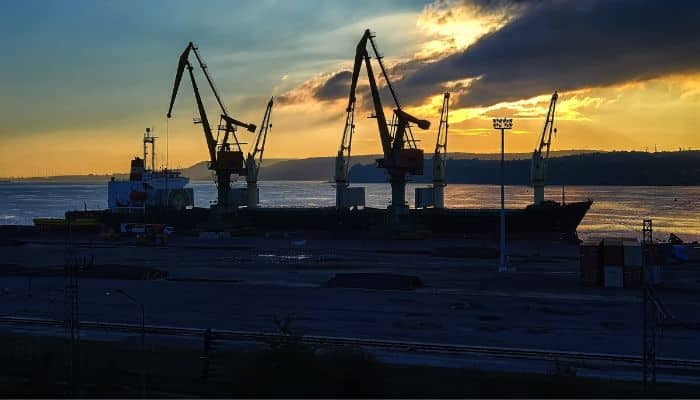
The terminal, owned and operated by Danube Logistics SRL, is situated on Pruth River, spanning 4 ha. It deals with aggregates, pet coke and coal. It has open storage areas, and ships discharge the cargo with the help of a floating crane or a mobile harbour crane.
Oil Products Terminal
This facility has a jetty on the Danube, a tank farm comprising 8 storage tanks, loading facilities for trucks, and mixed-gauge rail loading and unloading facilities. The water depth at the jetty is 7 m which can accommodate ships and river barges.
The terminal has a 63,600 m3 of storage capacity divided among the 8 tanks. Four of them have floating roofs to store gasoline and light products. Six tanks store diesel fuel, and 2 store gasoline.
Container and General Cargo Terminal
This facility became operational in 2012. It also started a weekly container feeder service to Constanta South Container Terminal, Romania. This terminal has 2 ha of open storage linked to the railway and has 36 reefer plugs. It has a 70 tonnes Sennebogen mobile harbour crane, a reach stacker and two forklifts. The terminal has a water depth of around 6-8 m.
Grain Terminal
This terminal has been in operation since 2009, constructed and operated by SC Trans Cargo Terminal SRL, a subsidiary of Trans Oil Group of Companies, in collaboration with Danube Logistics SRL.
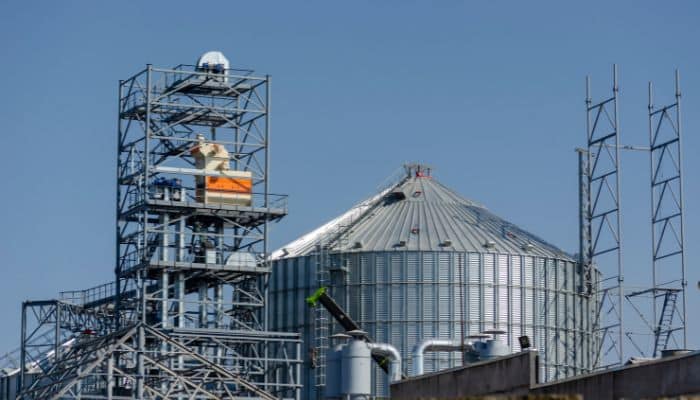
It can store over 50,000 mt and receive up to 3000 metric tonnes of grains in 24 hours by railways and roadways. Ships with a size up to 7000 mt can be loaded at a speed of 800 mt per hour on 2 berths.
RORO Terminal
Close to the general cargo and container terminal, this facility is being expanded, and a RORO ramp is under construction.
Vegetable Oil Terminal
This terminal has been functioning since 2011 and has a storage capacity of 6000 mt and can load ships up to 10,000 DWT.
Mixed-Gauge Rail Terminal
It started operations in 2014 and became Moldova’s first privately owned mixed-gauge rail terminal. It enables the transhipment of oil products from regular and broad gauge rail tank cisterns to and from Moldova, CIS and EU nations.
GIFP Business Park
The Business Park of Giurgiulesti International Free Port offers an excellent location on the border with the EU and promises low costs, a tri-modal transportation system, modern infrastructure, and a favourable tax and customs framework.
Investors can establish their businesses in the Park by leasing land, offices, open storage areas and warehouses. Moldova offers several investment options in the agriculture, manufacturing and logistics sector.
Moldova has more than 2.5 million hectares of highly fertile land and enough water resources. This, coupled with a favourable climate, well-educated and inexpensive labour or workforce, and close proximity to emerging markets in Europe, along with free trade regimes, make it a perfect place for investment and business.
It is also an ideal location for storing and distributing cargo destined for Central Eastern European, CIS and turkish markets.
Residents of the Business Park can also take advisory services. The GIFP Business Park provides such services upon request, ranging from the incorporation of a company in Moldova to other legal issues from project management, procurement issues and workforce recruitment.
Increase In Port Activity: A Result of Russia-Ukraine Conflict
The Port of Giurgiulesti has become quite busy after Russia invaded Ukraine. The former blockaded the port of Ukraine, and Giurgiulesti has since then helped get grain and fuel in and out of Ukraine.
Russia and Ukraine collectively supply around 30% of the world’s grains; hence food security concerns loom as Ukrainian Ports cannot function at their normal capacity. Thus, Ukraine found a helping hand from the Port of Giurgiulesti, which aided its economy by handling some of its imports and exports.
Cargo volumes at the port have doubled since 2022, reaching 804,029 tonnes, per the Port operator, Danube Logistics.
In 2021, the port transhipped 34,000 tonnes of petroleum products per month, but in May 2022, it handled 65,000 tonnes per month, a remarkable upward growth. It handled 309,404 tonnes of grain and 99,694 tonnes of grain and vegetable exports in 2022.
This is due to an increase in imports of petroleum products, coal, fertilisers, and exports of grain and vegetable oil. Most of the port’s transhipment and storage facilities are used for grain from Ukraine.
The port has a second vital function now. It is the main entry point of fuel into Moldova and also a supplier of fuel to the petrol station networks and framers of Ukraine. Also, it tranships grain from Ukraine, contributing to the global effort of averting a food crisis or shortage threatened by the growing tensions between Russia and Ukraine.
Hence, Giurgiulesti Port supports not only the economy of Moldova but also the economy of the region.
The general cargo terminal is operating at maximum capacity while a new U.S. $ 5 million terminal for dry bulk and general cargo is set to open in the latter half of 2023.
A new 5000 m2 container handling area has been developed, to be expanded later depending on demands. The port has hired extra staff and bought additional equipment, and the residents of the port have undertaken investments of over U.S. $100 million in total.
Ministry of Economy’s data shows that the port employs over 553 people, an increase of 7% from 2020, with a 22% rise in salaries, a 43.5% increase in investment, a 52.4% increase in transhipment and a 149% growth in tax payments.
You might also like to read-
- 10 Major Ports On The Great Lakes
- 10 Biggest River Ports In The World
- 10 Major Ports In Canada
- 10 Largest Natural Ports
- 10 Major Ports In The Caribbean
Disclaimer :
The information contained in this website is for general information purposes only. While we endeavour to keep the information up to date and correct, we make no representations or warranties of any kind, express or implied, about the completeness, accuracy, reliability, suitability or availability with respect to the website or the information, products, services, or related graphics contained on the website for any purpose. Any reliance you place on such information is therefore strictly at your own risk.
In no event will we be liable for any loss or damage including without limitation, indirect or consequential loss or damage, or any loss or damage whatsoever arising from loss of data or profits arising out of, or in connection with, the use of this website.
Do you have info to share with us ? Suggest a correction
Disclaimer :
The information contained in this website is for general information purposes only. While we endeavour to keep the information up to date and correct, we make no representations or warranties of any kind, express or implied, about the completeness, accuracy, reliability, suitability or availability with respect to the website or the information, products, services, or related graphics contained on the website for any purpose. Any reliance you place on such information is therefore strictly at your own risk.
In no event will we be liable for any loss or damage including without limitation, indirect or consequential loss or damage, or any loss or damage whatsoever arising from loss of data or profits arising out of, or in connection with, the use of this website.

About Author
Zahra is an alumna of Miranda House, University of Delhi. She is an avid writer, possessing immaculate research and editing skills. Author of several academic papers, she has also worked as a freelance writer, producing many technical, creative and marketing pieces. A true aesthete at heart, she loves books a little more than anything else.
Latest Maritime Knowledge Articles You Would Like:
Daily Maritime News, Straight To Your Inbox
Sign Up To Get Daily Newsletters
Join over 60k+ people who read our daily newsletters
By subscribing, you agree to our Privacy Policy and may receive occasional deal communications; you can unsubscribe anytime.



